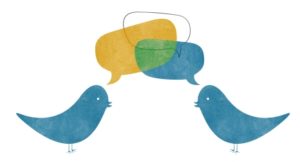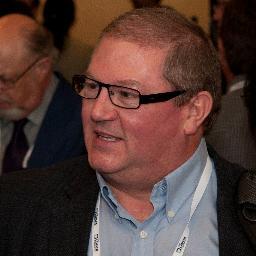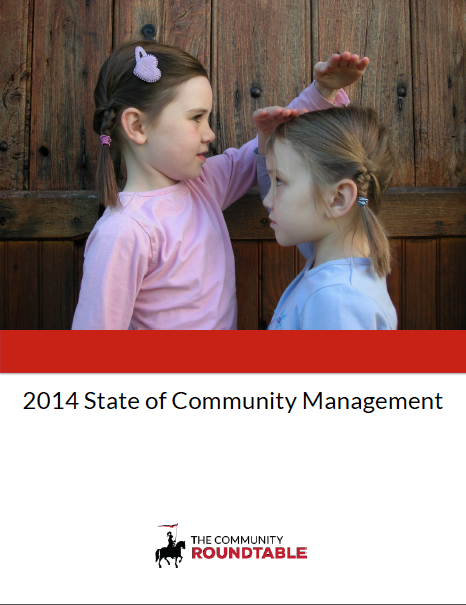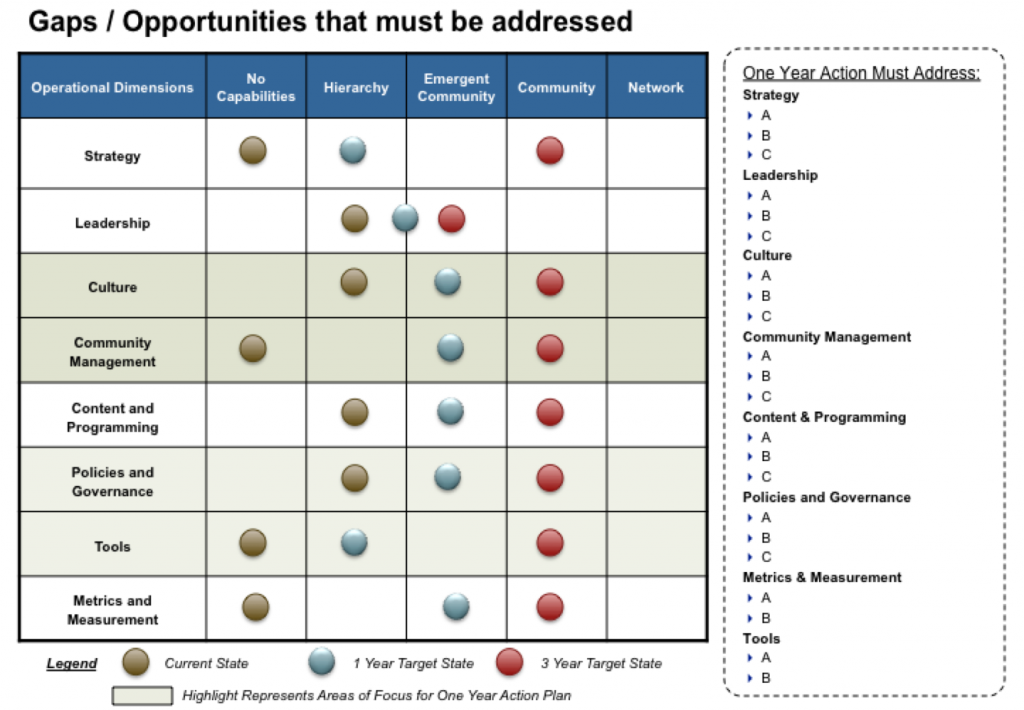By Shannon DiGregorio Abram, Relationship Manager at The Community Roundtable.
If you’re on twitter (and who’s not?) you may have seen, or even taken part of a twitter chat. We love this medium for connecting with your community – whether it’s a community of like-minded professionals, subject matter enthusiasts or passionate fans or advocates. We wanted to learn more about some of our favorite community management focused chats, so I reached out to the leaders of a few of our favorites – #ESNChat, #CommBuild, #cmgrchat and #CMGRHangout to learn how they got started and to learn some best practices you can apply to your twitter use.
Joining our conversation was Jeff Ross, producer of #ESNchat (Thursdays at 2pm ET), Praan Misir, organizer of #CommBuild (Tuesdays at 1pm ET) Jenn Pedde producer of #cmgrchat (Wednesdays at 2pm ET) and Sherrie Rohde producer of #CMGRHangout (Fridays at 2pm ET).
First off, we love all your chats, and try to pop in every week. Tell me, how did you get started in the world of twitter chats?
Jeff: I felt like there was a void in places to gather for those with a specific interest in enterprise social networks. There were other chats for community managers or those involved in social media, but the vast majority were giving most attention to external social media rather than internal. Vendors have their own gathering places for people who use their products, but there wasn’t one open and available place for ESN practitioners to communicate with each other regardless of vendor. After researching last summer and verifying the void, I decided to take the plunge and start #ESNchat.
Praan: I first got started with #Commbuild in early April of this year. I’m new to NTEN in general, but attending the #14NTC inspired me to dive right into engaging with and learning from the network. My first participation with the group was informative, inspiring, and fun, and I’ve met some really cool community builders through this exercise.
Jenn: Kelly Lux and I were relatively new to the world of Community Building and thought we would start a Twitter Chat for Community Managers since we didn’t see one out there already. From the very first one there has consistently been 80-100 people that participate each week so we’ve kept it up and will continue to do it as long as there are people wanting to join. It’s been four years!
Sherrie: I actually got started with #CMGRHangout because I wanted to learn more about Community Management. Tim McDonald originally founded it as a Google Hangout to fill the void of a video based learning place for Community Managers. To expand the reach of those able to interact, he added in the Twitter component with #CMGRHangout.
I love all your stories – the theme of learning and connecting seems to be there for each of you. What made you want to connect with your cmgr peers via this medium, specifically?
Jenn: We had read every book out there at the time on community building and wanted to meet others who were in the same boat.Twitter is such a great medium to pull people in randomly, have a great conversation initially, and leads to a lot of great collaboration online and offline elsewhere.
Sherrie: Video is powerful. It’s face to face communication and you simply can’t replicate that with only text. Tone of voice and body language are such a big part of how we communicate. From a Twitter standpoint, it’s also just a fantastic way to discuss a topic with peers around the world. We always know it will be the same time and place every week.
Jeff: I’ve taken part in other Twitter chats and have been blown away with the ability to make excellent professional and personal connections with people around the globe. The ease of gathering and sharing info and building a personal network around a topic is inviting and effective. I’ve learned more from resources shared on Twitter over the last several years than any other single source, so I believe strongly in the medium.
How you think these kind of chats differ from other community building events online?
Sherrie: The interesting thing about Twitter chats is you can accidentally participate in them. I’m constantly getting glimpses of variousTwitter chats from those I know and follow participating in them.
Jeff: I like the ability people have to easily come and go, to take part or not without a long-term commitment, and that it’s a specific, tiny slice of time we’re asking for on a weekly basis in the case of #ESNchat. It’s narrow in its focus. My goal isn’t to actually build an ongoing community of ESN professionals, although the relationships that happen as a result contribute to that outcome. My goal is to help advance the field of enterprise social networking by providing a means of sharing combined ESN knowledge and having a repository of that for anyone interested.
Praan: I think one of the biggest differences, and strengths in my opinion, is how open conversations can be. Although twitter chats are structured around a few key questions, the chats themselves allow for the conversation to travel in several different directions and tangents almost simultaneously. You can be contributing to the main conversation, participating in a few deeper conversations with other individuals, and even chiming in on other side-chats where necessary. The openness of Twitter also means that you interact with a diverse and dynamic array of perspectives on any given topic, with community builders from across the world. Finally, as events go, participating in a twitter chat is easy to do, all you really need is access to the internet and a Twitter account.
Jenn: Twitter chats are quick, easy to jump in and out of, easy to connect with others on one topic or a variety of issues, and everyone participates. Other community building events online might not have the high engagement that a Twitter chat gets.
What’s the one piece of advice you’d give to someone joining a twitter chat for the first time?
Jeff: Dive in and have fun. Don’t be overwhelmed by a fast-moving steam of tweets. Strike up a few conversations with others present and add them to your network. Share your thoughts by answering the questions posed. Your opinion is wanted and as valid as anyone else’s. We’re all here to learn from each other.
Praan: Be prepared to multitask. All those conversations and side conversations can get hectic and hard to follow, so you need to be prepared for at least monitoring a few conversations in real time. Although at first it can seem daunting, with the proper prep, you’ll be an expert in no time.
Jenn: Use a tool like Tweetchat or Twubs so you can see all of the tweets in one place and slow down the pace if you need to. Also, don’t lurk, jump in and start talking!
Sherrie: Make sure to introduce yourself! You’ll likely get a warm welcome if you let everyone know you’re new and checking it out.
Why would you recommend your chat (or any other twitter chat) to someone who has never taken part in one before?
Praan: Quite simply, it’s fun! I was a little nervous before my first #commbuild chat, but I ended up chatting with lots of people with great things to say about community building, and learned quite a bit. The community itself is very friendly to newcomers, and you can develop some pretty strong connections with tweeps and colleagues in this field.
Jenn: #CMGRchat is a wonderful community of brilliant people. Twitter chats exist on hundreds of topics, so they all have their own unique feel and expertise, but they’re generally a place where people go to feel connected, learn a thing or two, share their opinions, and feel like they belong. There’s not really a downside to popping into a chat every now and again except that you may become addicted to quite a few throughout the week! #Blogchat, #smmeasure, are all pretty great ones to join.
Sherrie: The moment you stop learning from those around you, life gets really, really boring. 🙂
Jeff: #ESNchat is a great conversation weekly by a group who share similar professional interests. It’s structured but informal enough to encourage friendly chatter. You’ll meet some fantastic people from around the globe that you’d never otherwise meet who will likely become your go-to people when you have questions around that topic.
This has been so great – I hope we’ve inspired all of our readers to either jump in and join a twitter chat or event get out there and start one of your own! We can’t thank Jeff, Praan, Jenn and Sherrie enough for taking the time to answer our questions and provide such great advice.
Do you have a favorite twitter chat? We’d love to hear about it!
—-
Did you know that 95% of TheCR Network members agree that the content and peer input improves the quality of their work? It’s true! Membership in TheCR Network saves community and social business leaders time and improves the quality of their work by connecting them quickly with peers, experts and curated information. Learn how joining TheCR Network can improve the work you do.






